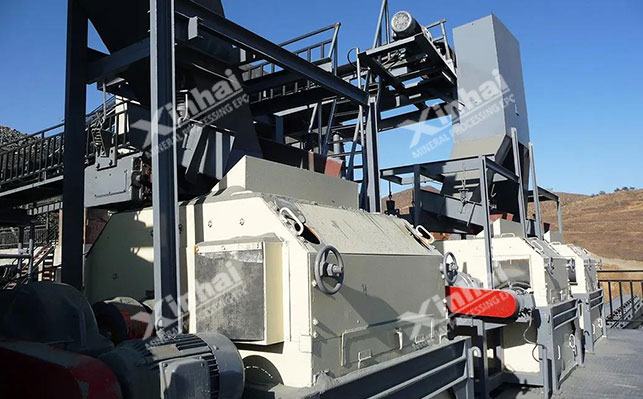The phosphorus in phosphate iron ore mostly exists in the form of phosphate, and the presence of phosphorus directly affects the quality of iron ore, so phosphorus removal operation is necessary. At present, common iron ore phosphorus removal processes include flotation, magnetic separation, chemical leaching, oxidation roasting magnetic separation combined method, and microbial method.
The flotation dephosphorization of iron ore mainly relies on the differences
in physical and chemical properties of mineral surfaces, and the addition of
specific flotation reagents to make the target mineral surface hydrophobic.
After air is introduced into the flotation machine to form bubbles, hydrophobic
mineral particles will attach to the bubbles and then rise to form a foam layer,
thus separating from hydrophilic gangue minerals. For phosphate containing iron
ores, collectors with selective adsorption of phosphate minerals can be used to
flotation the phosphate minerals and achieve the goal of
dephosphorization.
Under normal circumstances, flotation method is suitable
for processing fine-grained embedded iron ore and can effectively separate
phosphorus containing minerals and iron minerals. However, flotation requires
the use of a large amount of reagents, is costly, and generates a certain amount
of wastewater that needs to be treated.

Magnetic separation of iron ore for phosphorus removal is based on the magnetic differences between iron and phosphorus minerals. Iron in minerals has strong magnetism, while phosphorus containing minerals are generally weakly magnetic or non-magnetic. The magnetic field generated by the magnetic separation equipment will adsorb iron minerals with strong magnetism onto the magnetic separation equipment, separating them from non-magnetic or weakly magnetic phosphorus containing minerals.
Magnetic separation method is relatively simple to operate, has low cost, and is environmentally friendly. However, for some minerals with similar magnetic properties, the separation effect of magnetic separation may not be ideal and often needs to be combined with other methods.
Iron ore magnetic separation for phosphorus removal is the process of using chemical reagents to react with phosphorus in iron ore, dissolving it into a solution and achieving phosphorus separation. Common leaching agents include acids (such as hydrochloric acid, sulfuric acid), bases (such as sodium hydroxide), and salt solutions (such as ferric chloride solution).
The chemical leaching method has a good dephosphorization effect, but it requires a large amount of chemical reagents, has a high cost, and generates certain wastewater and waste residue, which needs to be treated. In addition, chemical leaching methods have certain requirements for the adaptability of ores, and suitable leaching agents and process conditions need to be selected according to the properties of the ore.
The combined method of iron ore oxidation roasting and magnetic separation for phosphorus removal is to first oxidize and roast phosphorus containing iron ores, and under high temperature and oxidizing atmosphere, cause chemical changes in phosphorus containing minerals while enhancing the magnetic properties of iron minerals. Then, magnetic separation equipment is used to separate iron minerals with strong magnetism, achieving the goal of dephosphorization.
The combined method of oxidation roasting and magnetic separation can effectively remove phosphorus from iron ore and improve the grade of iron. However, this method requires a large amount of energy consumption, requires significant equipment investment, and generates a certain amount of exhaust gas that needs to be treated.
Microbial dephosphorization of iron ore is the process of utilizing the metabolic processes of certain microorganisms to decompose phosphorus containing minerals in iron ore. Some microorganisms can produce organic acids, enzymes, and other substances that can react with phosphorus containing minerals to dissolve phosphorus.
Microbial dephosphorization is an environmentally friendly method with low cost and no secondary pollution. However, the dephosphorization efficiency of microbial dephosphorization method is relatively low, the treatment cycle is long, and it is still in the research and development stage.
The above is an introduction to several beneficiation methods for
dephosphorization of iron ore. In actual beneficiation plants, due to the
different properties of iron ore and variations in phosphorus content, the
selection of beneficiation process methods cannot be blindly carried out, and
needs to be determined based on the impurity content in iron ore. Therefore, it
is recommended to conduct beneficiation experiments and design suitable
phosphorus removal processes for iron ore through experimental analysis, in
order to improve phosphorus removal efficiency and achieve efficient recovery of
iron ore.